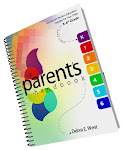Your Fifth Grader and Technology: Part 1
Your fifth-grader and technology
By the end of fifth grade, your child should demonstrate advanced keyboarding skills to edit her work.
By Miriam Myers, GreatSchools Staff
In a technology-rich classroom, your fifth-grader uses tools to enhance her understanding of language arts, science, social studies, math, and art. Her use of new tools to answer age-old questions is the first step to technological literacy.
Resources range from computers, software programs, and the Internet to digital cameras, camcorders, and voice recorders. Technology isn't a substitute for teaching, but a way to bring the world into the classroom. Plus, it's an essential tool for your child's future.
The Internet can connect kids to native speakers of a language they are learning or to scientists around the world. Computer-based programs can give teachers real-time feedback on how well students grasp a concept in math. But technology is no substitute for learning mathematical concepts or the basics of writing an essay.It's simply one way to enhance classroom instruction and help your child practice new skills and master new concepts.
The technology skills she learns will help your child write research papers in history and do multimedia presentations in science. She will develop critical evaluation skills by assessing the credibility of websites and learning about copyright laws and the ethics of using online information or pictures.
"Fifth-graders are very comfortable using a computer to complete learning projects," explains our teacher consultant Gayle Berthiaume.
Technology use varies from school to school Many states base their technology standards on the National Educational Technology Standards for Students (NETS). But because children aren't tested on their use of technology, teachers aren't typically held accountable for teaching it. That means computer use varies widely from classroom to classroom. Your fifth-grader may have one or more computer workstations in the classroom, go to a computer lab once a week, or not use technology regularly.
To get the maximum benefit from technology, the best classrooms incorporate technology into regular lessons that develop students' higher-order thinking skills, promote creativity, and facilitate academic learning. Your child's teacher may use technology to evaluate students' progress.
Technology terminology
Fifth-graders build on their vocabulary to communicate about technology. Your child should be able to discuss common uses of technology in daily life and its advantages and disadvantages. He should apply strategies for identifying and solving routine hardware and software problems. Your child should be learning the names of computer parts - monitor, keyboard, mouse, printer, and speakers - and software terms - menu, file, folder, application, save, and quit.
Keyboard and mouse
Your fifth-grader continues to improve her skills in typing and using a mouse. She practices typing and increases the rate of words she types per minute. A fifth-grader should type 20 words per minute. To avoid repetitive stress injuries later on, she should learn to use the correct hand, wrist, and body positions and the proper techniques for striking the keys. By the end of the year, she should demonstrate advanced keyboarding skills such as cutting, copying, and pasting to edit her work. Schools may use a typing program that teaches students how to type.










0 comments:
Post a Comment